Oolong Tea’s Rich History and Its Beautiful Creation
TEATIME NOTES
Find tips, recipes, and articles to increase your delight and enjoyment of tea.
Oolong Tea’s Rich History and Its Beautiful Creation

How the Love of the Dragon Made Oolong Tea
By Erika Robertson
Do you love the strong deep flavor of black tea? How about the earthy-sweet tones of green tea? If you love green and black teas you will love oolong teas. They are some of the most prized and cherished teas in the world — and for good reasons. Oolong teas are complex and some of the most sought-after teas that can be enjoyed during any kind of occasion.
What Is an Oolong Tea? — A Quick History of Oolong Tea
Oolong — or wu-lung — is a tea that was invented in China. These two words mean “black dragon” or “dark dragon”. Because oolong tea is oxidized it is dark in color. The leaves of oolong tea are twisted and warped so that they resemble the shape of a black dragon.
The ancient history of the invention of oolong tea is shaded in myth and legend. But we do know that the practice of semi-oxidizing tea leaves didn’t come into full practice until the Ming Dynasty (1368 - 1644). Oolong teas became popular during the Qing Dynasty. It was during this time that the oolong tea named Ti Quan Yin — the Iron Goddess of Mercy — inspired Emperor Qian Lung with its incredible beauty. Oolong tea became a popular and sought-after treasure.
By the mid-1900s oolong tea became such a widespread and loved tea that Taiwan began harvesting it alongside China. Oolong tea can be created from any tea leaf ranging from Japan to India to Nepal. But the most prized oolong teas come out of the Fujian and Anxi areas of China and Taiwan.
How is Oolong Tea Made?
Did you know that every single kind of tea that you drink — white, green, oolong, and black — is made from the same plant? Unlike coffee beans and wine grapes that come in different varieties and flavors — tea is harvested from one single plant.
The Camellia sinensis is a long tall plant that grows many pairs of leaves up and down the stalk. On the top are a bud and two little tea leaves. These two leaves and a bud are plucked and harvested to make every kind of tea imaginable. Once tea leaves are plucked, they are treated with different techniques to create a wide range of flavors and characteristics.
Oolong teas are the most complex to create of the four main tea groups. And there are a plethora of variations to creating different kinds of oolong teas within the oolong family as well. The possibilities and flavor profiles for oolong teas are bountiful and there is something for everyone to enjoy. Here are the basic steps for creating oolong tea:
- Pluck the Tea Leaves
Oolong tea leaves need to be strong to withstand the many steps it takes to create them. For this reason, larger and more mature tea leaves are plucked from the plant stalks. Oolong teas are harvested later in the tea season when the plants are older — around late April to early May. It’s possible for them to be plucked and harvested in lower elevations and warmer weather up to 6 times a year. They can also be harvested and plucked in higher elevations and colder weather up to 2 or 3 times a year.
- Wither and Semi-Oxidize the Tea Leaves
When the leaves are plucked from the stalks, they undergo a withering process. In this step, the leaves are laid out to dry in the sun or indoors. During this phase, the leaves can lose up to 30% of their moisture. The tea leaves will also go through a semi-oxidation phase, where deeper flavors will start to develop. If leaves are left outside, the characteristics of the land might also have an effect on the flavor of the leaves. Withering and wilting the tea leaves allows the leaves to become more flexible so they can prepare for the next step.
- Roll and Shape the Tea Leaves
When the leaves are done withering, they are rolled using a variety of methods based on the kind of oolong tea that’s being created. Oolong tea leaves can be rolled by hand and they can be rolled and tossed in bamboo baskets. They can even be tightly rolled in a cloth and fired and unrolled and fired again multiple times to create Tie Guan Yin — or Ti Kuan Yin — oolong tea. Rolling the tea leaves helps break down the leaves and releases oils that help enhance the oxidation process. After the leaves are rolled, they may be shaped by hand or with tools or machines.
- Oxidize the Tea Leaves
Oxidation takes place when the tea leaves come into contact with oxygen and change the chemical balance of the leaves. The tea leaves will start to turn brown and the longer they are left out, the darker they will become. Green and white teas are hardly oxidized. Black tea is fully oxidized. Oolong tea is partially oxidized anywhere from 1% to 99%. Oolong tea is partially oxidized most of the time. The more it is oxidized, the heavier and bolder the flavor of the tea will become. The less it is oxidized the more earthy and delicate the tea flavor will be.
- Heat or Roast the Tea Leaves
Heating or roasting the tea leaves stops the oxidation process and locks in the flavor of the tea leaves. This can be a long process that takes place over the course of the night. Different kinds of heating and roasting techniques and different temperatures will add different depths of flavor to the oxidized tea leaves. Dry heating practices are used for green teas in China. Wet heating techniques are used more in Japan for green teas. The new possibilities for adding unique roasting qualities to oolong teas seem to never end.
- Bake or Dry the Tea Leaves
This is an optional step for certain kinds of oolong teas. Traditionally, the tea leaves are baked in bamboo baskets while being tossed over wood or charcoal. Baking the leaves in this way adds an even more complex flavor to this incredible and unique tea. The tea leaves are also shaped to resemble characteristic little black dragons for which they are named.
- Age the Tea Leaves
Another optional final step in creating oolong teas is to age them. This aging process is different than that of pu-erh teas which go through a fermentation process. Oolong teas that are aged are stored in a large container where they can breathe over a long period of time. Every few years, the teas can be baked in order to evaporate the moisture that has developed during storage. Baking the tea will also increase the depth of flavor in the oolong leaves, and sustain the quality of the tea.
Where to Find the Loveliest Oolong Tea
There is one tea company that is on a mission to spread health and wellness to all tea lovers. Teabloom is trying to clean up the international tea industry’s tea and teaware practices.
Teabloom’s oolong teas are USDA Certified Organic, Kosher Certified, and they are made with the finest and freshest natural ingredients.
Their teabags are environmentally friendly. They are better than biodegradable teabags. Their pyramid tea sachets are 100% compostable and they are large enough to hold the finest high-quality tea leaves. This means you will never have to compromise the flavor of good whole organic tea leaves for the convenience of dust-filled teabags ever again.
Teabloom wants the world to know about the incredible health and environmental benefits of borosilicate glass teaware. Most people are not aware that their adorable porcelain teacups and teapots leach lead and other toxins into their tea.
Borosilicate glass is easy to clean, long-lasting, and very strong. Not only does borosilicate glass promote a healthier toxic-free lifestyle, but it also makes tea taste as if you’ve never tasted it before — clean, pure, and full of only the best and greatest flavors.
Are you looking for a tea company that cares about your health and wellness? Are you searching for the new wave of eco-friendly and chemical-free teas and teaware?
Take a stroll and enjoy an afternoon of tea, splendor, and delight, with Teabloom.





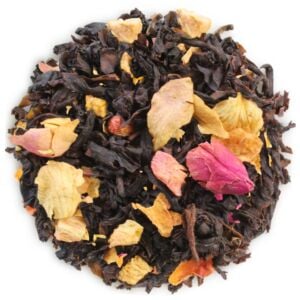





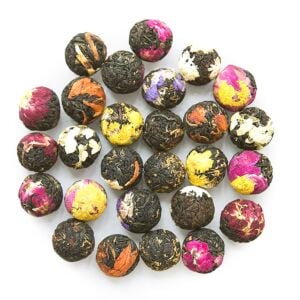


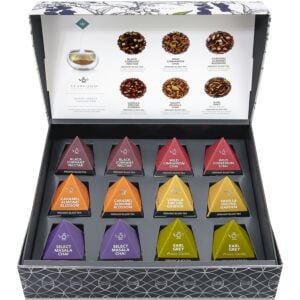
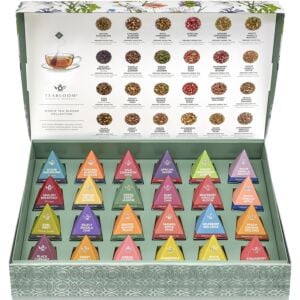













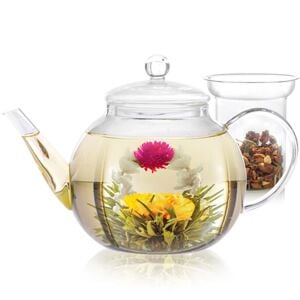


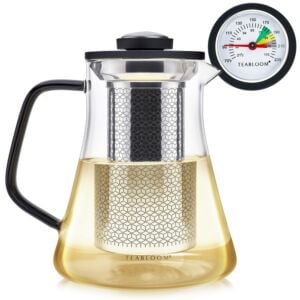
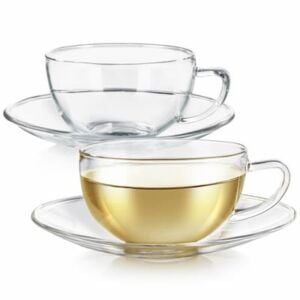


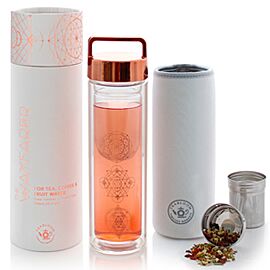










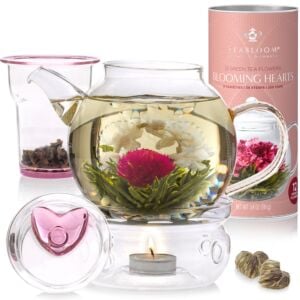





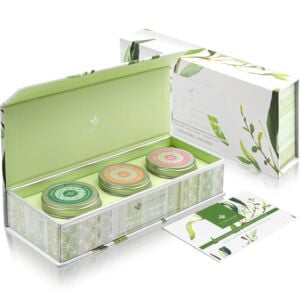



























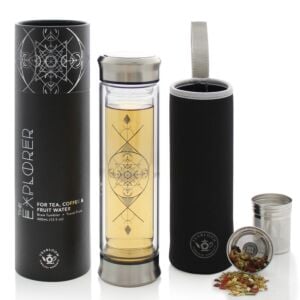








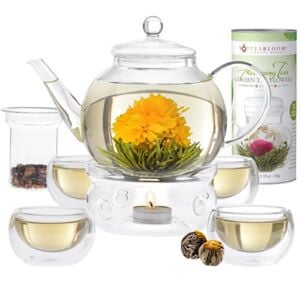

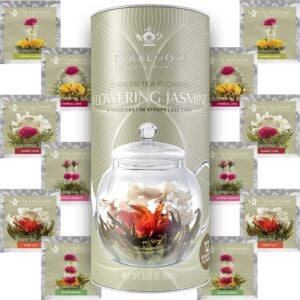








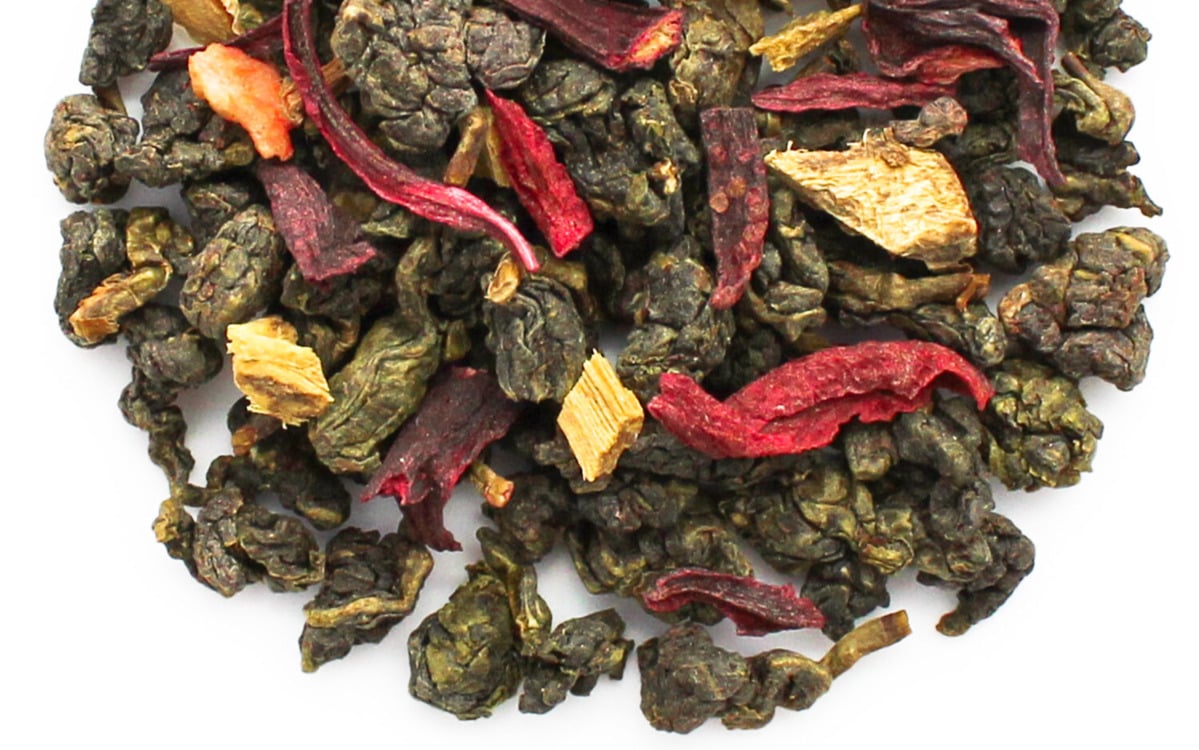



Share your thoughts